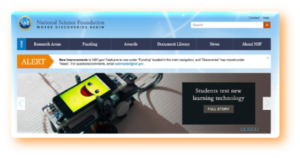Teachable Robots
Overview:
This project advances an empirical investigation that uses a teachable robot learning environment to improve understanding of how adaptive cognitive and social support can facilitate embodied interactions with teachable agents. This project investigates the teachable agent phenomenon within the context of the Tangible Activities for Geometry system (TAG), a robotic teachable agent platform for middle school mathematics and computational thinking.

All related efforts using the teachable agent paradigm have focused on agents in virtual environments. In contrast, middle school students in the TAG environment physically engage with a projected space and an interactive teachable robot named Quinn. They teach Quinn how to solve challenges involving plotting points on a graph, translating points, rotating points, and plotting lines by giving procedural and conditional instructions to Quinn.

This project aims at discovering how teachable robots in classrooms can improve learning outcomes. Middle school students, including high percentages of underrepresented minorities, will learn to design features of the robots, exposing learners to STEM careers and increasing the likelihood of acceptance and scalability. The robot framework will be tested in schools developing new ways of using technology to learn mathematics and computational thinking. The investigative team will also disseminate findings and Do-It-Yourself (DIY) instructions for cyberlearning environments and
pedagogical approaches.
Funding agency:

Status:
Our lab environment, web interface, and simple robot controls are all complete (version 1.0.0).- The robot source code contains everything needed for both the robot and the workstation, and can be used with Netsblox or a gui application.
- A pre-build image for the Raspberry Pi is available upon request, that is updated with all the necessary dependencies and proper configuration.
- The original project uses a LEGO NXT robot and two iPod touches for control and communication. Our aim is to provide a practical alternative with a substantially smaller investment.
- The robot and coordinate plane assembly instructions are expected to be available by early Fall.
- We are working hard to put this platform on C2STEM in conjunction with a Computer Science Principles course, more details to follow soon.
Systems used:
- Raspberry Pi
- Arduino
- Netsblox
Related publications:
A DSML for a Robotics Environment to Support Synergistic Learning of CT and Geometry <link>
Design and Development of a Low-Cost Open-Source Robotics Education Platform <link>
Further Information:
Tangible Activities for Geometry
Researchers involved:
Vanderbilt University: Prof Gautam Biswas, Timothy Darrah , Nicole Hutchins
New York University: Prof Win Burleson
Contributors: Geoff Pettit, Hamid Zare

